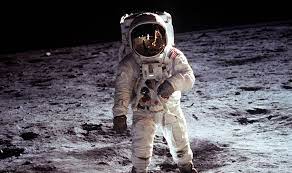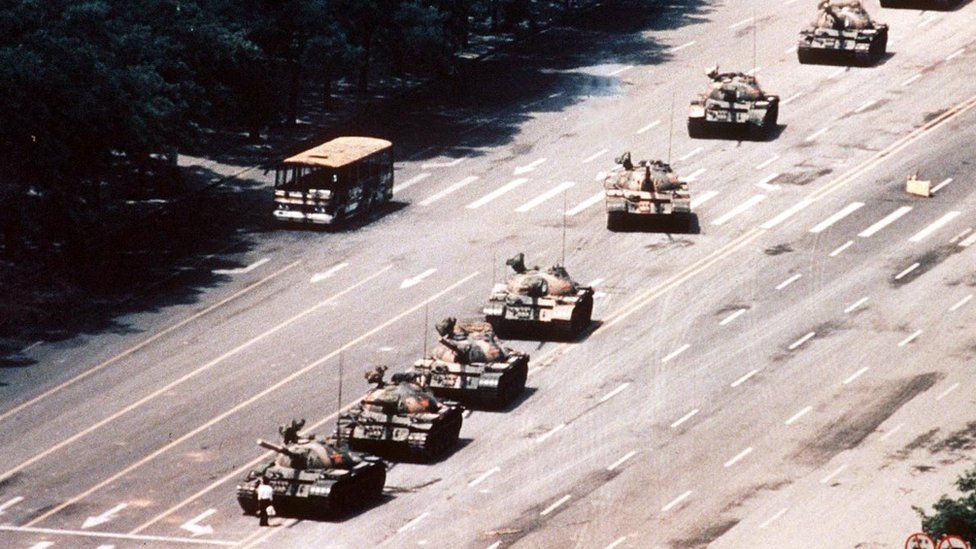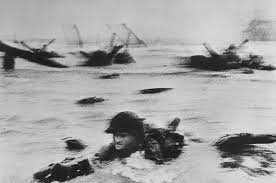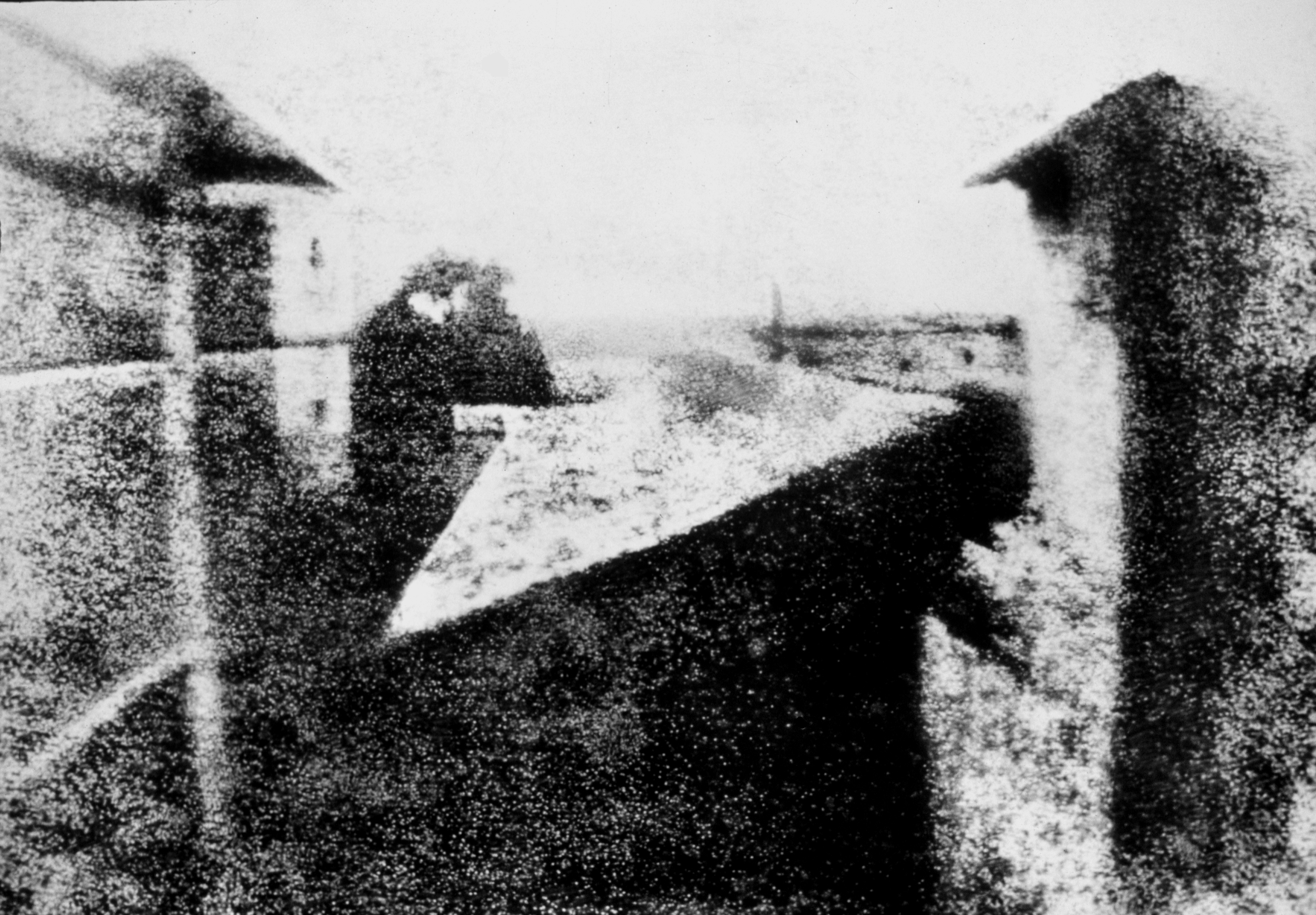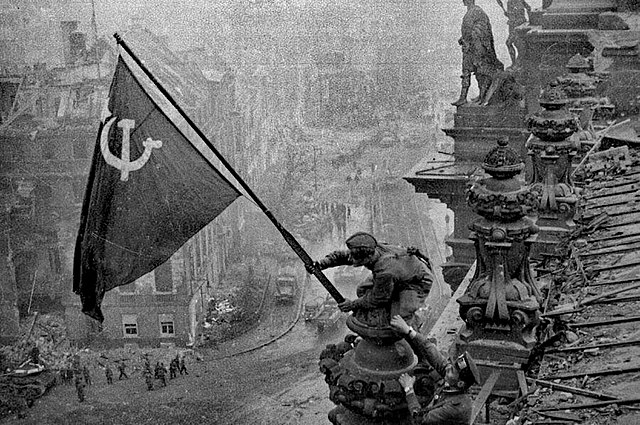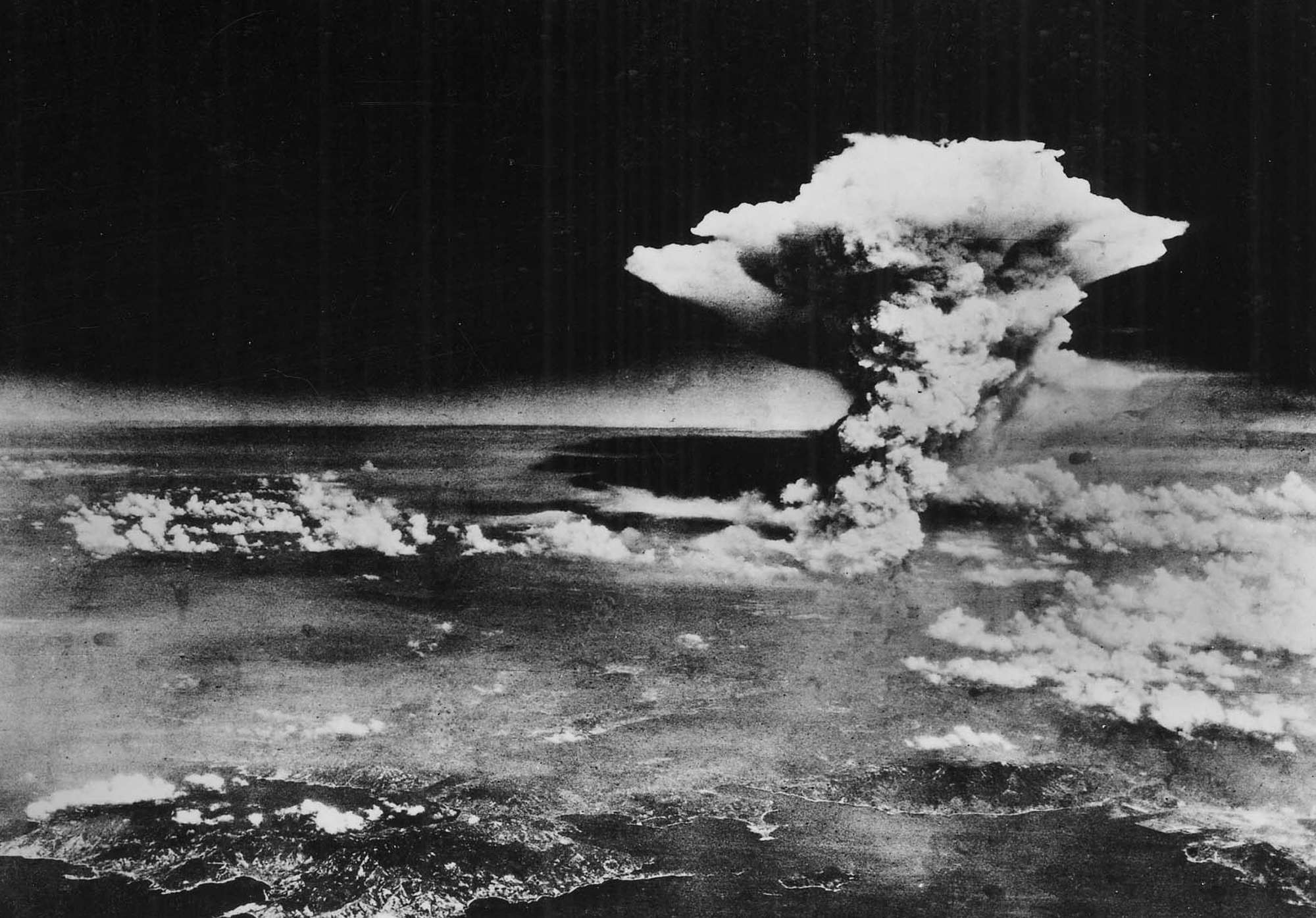20th Century
In 1901, Guglielmo Marconi transmitted the Morse code letter S across the Atlantic with his new invention, the radio.
In 1903, the Wright brothers’ made the first airplane flight, that of 120 feet. Later that same day, they bettered the distance to 852 feet.
In 1904, the Russo-Japan war was fought, over imperial ambitions over Manchuria & Korea. The Japanese emerged victorious.
In 1905, Albert Einstein, in his paper, "On the Electrodynamics of Moving Bodies" published his theory of relativity. 10 years later, later supplemented this with his general theory of relativity which changed our understanding of gravity, space & time.
In 1908, The Young Turk Revolution of the Ottoman Empire took place when the Young Turk movement forced Sultan Abdulhamid II to restore the Ottoman constitution of 1876 and ushered in multi-party politics within the Empire. In that same year, the de jure independence of Bulgaria from the Ottoman Empire was proclaimed.
Later that year, Austro-Hungary annexed Bosnia-Herzegovina, which belonged to the Ottoman-Empire (and previously were only allowed to occupy - refer to 1878), triggering the Bosnian Crisis.
In 1910, there was a revolt in Albania, a reaction to the new centralization policies of the Young Turk Ottoman government in Albania.
In 1911, revolution in China led to the end of the Qing dynasty. The brief civil war that ensued was ended through a political compromise between Yuan Shikai, the Qing military strongman, and Sun Yat-sen, the leader of the Tongmenghui (United League). After the Qing court transferred power to the newly founded republic, a provisional coalition government was created along with the National Assembly. However, political power of the new national government in Beijing was soon thereafter monopolized by Yuan and led to decades of political division and warlordism, including several attempts at imperial restoration.
That same year, the Italo-Turkish War led to the capture of Libya for the Italians. In Morocco, German imperial ambitions triggered the Agadir Crisis with the French.
In 1912, the First Balkan War was fought in which the four Balkan states of Serbia, Bulgaria, Montenegro & Greece defeated the Ottoman Empire. One year later, the Second Balkan War was fought. This time, Bulgaria fought against all four original combatants of the first war along with facing a surprise attack from Romania from the north. The conflicts ended catastrophically for the Ottoman Empire, which lost the bulk of its territory in Europe. Austria-Hungary, although not a combatant, became relatively weaker as a much enlarged Serbia pushed for union of the South Slavic peoples.
Also in 1912, Republic of China replaced the Chinese Empire and the Kuomintang was formed by Sun Yat-Sen as the Chinese nationalist party.
In 1914, the assassination of Archduke Franz Ferdinand leads to the First World War.
In the same year, the Panama Canal was opened, connecting the Atlantic and Pacific coasts.
In 1915 the Armenian genocide began. It was the systematic mass murder and ethnic cleansing of ethnic Armenians by local Ottoman paramilitary.
The Easter Rising occurred in 1916. It was an armed insurrection in Ireland during Easter Week. The Rising was launched by Irish republicans against British rule in Ireland with the aim of establishing an independent Irish Republic while the United Kingdom was fighting the First World War.
Also in 1916, was a military uprising of Arab forces against the Ottoman Empire in the Middle Eastern theatre of World War I. On the basis of the McMahon–Hussein Correspondence, an agreement between the British government and Hussein bin Ali, the Sharif of Mecca, the aim of the revolt was to create a single unified and independent Arab state stretching from Aleppo in Syria to Aden in Yemen, which the British had promised to recognize.
In Russia in 1917, the Russian Revolution took place. It led to the end of the Russian monarchy and the beginning of the Bolshevik led Soviet Socialist Republic. The Treaty of Brest-Litovsk, signed in 1918 marked the end of Russia’s part in WW1.
On November 11th 1918, an armistice was signed that marked the end of WW1. A whirlwind of events occurred in the aftermath. Poland, Ukraine and Belarus were among a number of states to declare independence from Russia. The Austrian-Hungary empire was dissolved and the successor states of Austria, Hungary, Czechoslovakia, Poland, Ukraine and the State of Slovenes, Croats and Serbs were established. The Kingdom of Iceland was also established. War also broke out between Poland and Ukraine after the dissolution of Austria-Hungary.
The Finnish Civil War took place, in which the Finnish Whites defeated the Finnish Red.
Mehmed VI became the last Sultan of the Ottoman Empire and last Caliph, after which partitioning of the Ottoman Empire began. The British occupied Palestine and the Mutawakkilite Kingdom of Yemen was founded. The Azerbaijan Democratic Republic was declared and later the Armenian–Azerbaijani War began.
In 1918, the Spanish Flu was estimated to have killed anywhere between 17 to 100 million.
In 1919, the Treaty of Versailles, signed exactly 5 years after the assassination of Archduke Franz Ferdinand was signed, officially marking the end of the first world war. The treaty led to territorial changes, military restrictions being imposed on Germany, reparations demand to be paid by Germany, guarantees of non-aggression from Germany, and set the framework for international organizations like the League of Nations. In the same year, after the Kaiser abdicated, the German Revolution ended with the collapse of the German Empire and the establishment of the Weimar Republic. Estonia emerged victorious in its war of independence against a Soviet Offensive.
Later that year, the League of Nations was founded in Paris. War began between Poland and the Soviets.
In Italy, the Italian National Fascist Party is established by Benito Mussolini.
The Soviets established the Comintern, an international organization that advocated world communism.
In Egypt, a countrywide revolution against the British occupation of Egypt and Sudan took place. It ended with Britain recognizing the independence of Egypt but continued its occupation.
The Turkish War of Independence fought between the Turkish Nationalist Movement and the allies began. The International Labour Organization was also established.
In India, the Jallianwala Bagh Massacre took place when Acting Brigadier-General Reginald Dyer ordered troops of the British Indian Army to fire their rifles into a crowd of unarmed Indian civilians
Also in 1919, science made progress as Ernest Rutherford discovered the proton while the first experimental evidence for the general theory of relativity was obtained by Arthur Eddington.
In 1920, The Eighteenth Amendment (Amendment XVIII) of the United States Constitution established the prohibition of alcohol in the United States.
The Nineteenth Amendment, later that year, gave women the right vote.
In 1921, Adolf Hitler becomes Führer of the Nazi Party. His ries coincides with a rise in prices as hyperinflation in the Weimar Republic began.
In 1922, Ottoman Sultanate was abolished by the Turkish Grand National Assembly and Sultan Mehmed VI was deposed.
The Irish Free State is established, while the Province of Northern Ireland is created within The United Kingdom. The Irish Civil War also began. It was fought between the nationalists (those who supported the Anglo-Irish Treaty) and the republicans.
The Italian reconquest of Libya began & the march on Rome brought Benito Mussolini to power.
Egypt gained independence from the United Kingdom, though the British forces continued to occupy the Suez Canal.
Howard Carter discovers Tutankhamen's tomb (which had remained sealed for around 3200 years).
The Union of Soviet Socialist Republics (USSR), the world's first officially Communist state, is formed.
In India, Gandhi called off the non-cooperation movement after the demonstrators, after clashing with police, attacked and set fire to a police station, killing all of its occupants.
In 1923, the Turkish War of Independence ended. The leader of the nationalist movement Kemal Pasha, under the name of Kemal Artaturk became its first president. He also moved the capital from Istanbul to Ankara.
In the same year, the Walt Disney Company was founded.
In 1926, Hirohito became the Emperor of Japan.
In Massachusetts, Robert Goddard launched the first liquid-fueled rocket. It flew 41 feet into the air.
In 1927, Joseph Stalin became leader of the Soviet Union.
Also that year, a 21 year old man from Utah finished building the first television. The first image transmitted and displayed was a horizontal line.
In 1928, Chiang Kaishek, a member of the Kuomintang and a lieutenant of Sun Yat-sen, Commander in chief of the National Revolutionary Army led the Northern Expedition from 1926 to 1928, before defeating a coalition of warlords and nominally reunifying China under a new Nationalist government.
In 1929, Wall Street crashed, an event that was a precursor to the Great Depression.
In 1931, the Chinese Soviet Republic was founded. One of its founders was Mao Zedong. That same year, Japan invaded Manchuria.
In 1933, Adolf Hitler became the chancellor of Germany. Meanwhile in the USA, Franklin Delano Roosevelt’s New Deal was enacted to combat the effects of the Great Depression. This also marked the end of prohibition.
In 1934, The Austrian Civil War resulted in Fascist victory.
Mao Zedong began the Long March, a retreat from being under pressure from the Kuomintang.
The United States occupation of Haiti ended. They also granted more autonomy to the Philippines.
Adolf Hitler instigates the Night of the Long Knives, which cements his power over both the Nazi Party and Germany. With the death of President Hindenburg, Hitler became the Führer of Germany.
Also that year, Bonnie and Clyde are shot to death in a police ambush.
In 1935, Persia officially became known as Iran.
In Germany, the anti-semitic Nuremberg Laws were enacted.
Between 1936 and 1939 the Spanish Civil War was fought between the left leaning Republicans (supported by France) and the right leaning Nationalists (supported Germany & Italy). The Nationalists were victorious and General Franisco Franco became dictator of Spain.
In 1937, Japan invaded China. However, China, supported by the Soviets, USA and Britain was able to regain most of the territories it had lost in the First Sino-Japanese War
That same year, the Irish Republican Army (IRA) attempted to assassinate King George VI of the United Kingdom.
Nazi Germany annexed Austria which was later ratified by plebiscite.
Also that year, John Atanasoff designed the first electronic digital computer. It used binary numbers and all data was stored in capacitors.
In 1939, the German invasion of Poland triggered the Second World War.
In 1940, the Soviet Union annexed the Baltic States.
In 1941, Operation Reinhard commenced the main phase of Holocaust.
The attack Japanese attack on Pearl Harbour led to the US joining WW2.
That same year, a joint Anglo-Soviet invasion of Iran took place. One of the results following the invasion, was that Reza Shah abdicated and was forced into exile by the invading British. He was replaced by his young son Mohammad Reza Pahlavi.
In 1942, the War Department was given joint responsibility for the Manhattan Project. Underneath the football stands at the University of Chicago, a team of physicists used uranium to produce the first self-sustaining chain reaction. The world now had a way to harness nuclear power.
In 1943, Joseph Stalin, Franklin Delano Roosevelt and Winston Churchill met in Iran. The Tehran Conference was a strategic meeting that led to the Soviet entry in the Pacific War as well as discussions considering the post-war division of Germany and the formation of the United Nations.
In 1945, Hiroshima and Nagaski felt the wrath of the atomic bombs (codenamed Little Boy and Fat Man). This ultimately led to the end of World War II in Asia and beginning of the occupation of Japan. Korea got independence from Japan.
In 1945, the Yalta and Potsdam conferences between the Big 3 resulted in the redrawing of borders in Europe post the war.
That same year, the United Nations was founded and the Nuremberg trials began to prosecute for war crimes.
In 1946, Italy and France both became republics again.
Jordan got independence from Britain after the British Mandate for Palestine ended.
That same year, the First Indochina War began between France and Vietnam (led by Ho Chi Minh).
The USA granted the Philippines complete independence.
Also in 1946, the first images of the Earth were taken from space.
In 1947, the partitioning of India and Pakistan took place.
Harry Truman presented his doctrine for the containment of Communism with the aim of providing assistance to any nation (beginning with Greece and Turkey) under threat from external or internal authoritarian forces.
Also that year, scientists at Bell Labs invented a miniature device that is used to control or regulate the flow of electronic signals, the transistor, a key component of all soon to arrive electronic devices.
In 1948, the state of Israel was officially formed.
In South Africa, the system of institutionalised racial segregation called Apartheid began. Korea was officially partitioned with Syngman Rhee winning elections in South Korea (backed by the USA) while Kim Il-sung consolidated his position as the leader of Soviet-occupied North Korea.
In 1948, keeping in line with the Truman Doctrine, the American initiative of the Marshall Plan was passed in foreign aid to Western Europe. The United States transferred over $12 billion dollars ($130 billion as of 2019). One of the effects of the Marshall Plan was a strong currency emerging in Western Germany. To combat this, the Soviets enacted the Berlin Blockade.
In 1949, the North Atlantic Treaty Organization was created.
Mao Zedong established the People’s Republic of China while the Chiang Kai-Shek led Republic of China relocated to Taiwan.
In 1950, the North Korean invasion of South Korea began the Korean War. China invaded Tibet that same year.
In 1952, the Egyptian Revolution under Gamal Abdel Nasser overthrows King Farouk and ends British occupation. Meanwhile in Britain itself, Queen Elizabeth II became the monarch of the Commonwealth.
In 1953, Joseph Stalin died leading to a power struggle, from which Nikita Khrushchev emerged as leader of the Soviet Union.
In 1955, the Vietnam War officially began.
That same year, West Germany joined NATO. In response, the Warsaw Pact, a collective defense treaty, was signed between the Soviet Union and seven other Eastern Bloc socialist republics of Central and Eastern Europe.
In 1956, the Hungarian Revolution, led by Imre Nagy was crushed by the Soviets.
Also that year, Israel, the United Kingdom and France, invaded Egypt with the aim of controlling the Suez Canal (which Nasser had nationalized). However, pressure from the US, Soviets and the UN caused the trio to withdraw.
A computer program called the Logic Theorist written that year, was able to prove 38 mathematical theorems. It was the first semblance of artificial intelligence.
In 1957, the world’s first artificial satellite, Sputnik I, was launched by the Soviet Union.
In that same year, the Treaty of Rome was signed. It remains one of the two most important treaties in what is now the European Union (EU).
In 1959, Fidel Castro became the leader after the Cuban Revolution.
An uprising in Tibet against China led to the exile of the Dalai Lama.
In 1960, a year known as the Year of Africa, saw African 17 countries getting independence from the French, United Kingdom and Belgium’s rule.
In 1961, the construction of the Berlin Wall began.
In China, by the end Mao Zedong’s Great Leap Forward, the biggest famine in terms of the number of deaths had occurred.
Also that year, the US covert operation, the Bay of Pigs Invasion, aimed at undermining Castro’s rule, failed. Castro then allied himself with the Soviets.
In 1962, Algeria got independence from France.
The Cuban Missile Crisis brought the US and the Soviets to a military standoff, the closest point to nuclear war in the Cold War. De-escalation occured with the publicized removal of missiles from Cuba by the Soviets and the non-publicized removal of American missiles from Turkey.
In 1963, Martin Luther King delivered his ‘I Have A Dream Speech’ during the March on Washington.
Later that year, President JFK was assassinated.
In 1964, the Civil Rights Act was passed.
In 1965, the Congo Crisis occurred after the Belgians left the country and opposing political factions rivaled each other for power. This turned into a proxy for the Cold War with the USA backed Joseph Mobutu finally emerging as the dictator of Congo (renamed Zaire).
That year, Martin Luther King participated in the Selma March that was instrumental in ushering in the Voting Rights Act. The act prohibited racial discrimination in voting.
Also that year, Eli Cohen, an Israeli spy was hanged publicly in Damascus.
In 1966, Mao Zedong launched the Cultural Revolution, aimed at purging remnants of capitalistic and traditional elements from Chinese society.
In 1967, Israel entered the 6 Day War against Egypt, Jordan and Syria. Israel was victorious and occupied the Gaza Strip and the Sinai Peninsula, the West Bank (including East Jerusalem), and the Golan Heights.
In 1968, Alexander Dubček tried reforming Czechoslovakia under the communist party’s rule. He was eventually suppressed by the Soviet Union and other Warsaw Pact members who invaded the country, in what is known as the Prague Spring.
In 1969, Muammar Gaddafi overthrew King Idris of Libya in a coup d'état and established the Libyan Arab Republic.
The same year, Neil Armstrong became the first man to step foot on the moon while the Department of Defence created ARPANET, the earliest incarnation of the Internet.
In 1971, the Bangladesh Liberation War occurred and Bangladesh gained independence from Pakistan, which led to the Third Indo-Pakistani War.
In 1972, during the Summer Olympics in Munich the Palestinian Terror group, Black September killed 11 memebers of Israel’s contingent after taking 9 hostage. After a failed hostage rescue attempt the terrorists killed the hostage. Three members of the terror group were caught.
Later that year, the 3 captured terrorists were swapped for the safety of the hijacked Lufthansa (German Airline) flight. The flight was made to land in Tripoli and the 3 exchanged members of the terror group were granted asylum in Libya by Muammar Gaddafi.
In 1973, the Yom Kippur War was fought between Israel (supported by the USA) against the Egyptians and Syrians (supported by the majority of the Middle East and the Soviets). As a result the OPEC (Organization of Arab Petroleum Exporting Countries) proclaimed an oil embargo targeted at nations perceived as supporting Israel.
Also that year, the impeachment process of Richard Nixon began due to the Watergate scandal.
In 1976, the death of Mao Zedong brought the Cultural Revolution to an end.
In America, the invention of the personal computer 2 years prior, didn’t prevent 2 ambitious men from founding an iconic company. Steve Jobs began marketing his friend Steve Wozniaki’s creation, the Apple I computer, under what is now known as Apple Inc (the company with, currently, the highest market cap).
In 1978, Jim Jones, the leader of the cult, Peoples Temple Agricultural Project ("Jonestown"), ordered his followers to take cyanide in a mass suicide that led to the death of 907 people.
Also in 1978, the Saur Revolution, a coup d'état led by the Soviet-backed People's Democratic Party of Afghanistan (PDPA) against the rule of Afghan President Mohammed Daoud Khan resulted in Daoud Khan and most of his family being killed at the presidential palace. This marked the end of the Republic of Afghanistan and the formation of the Democratic Republic of Afghanistan.
In 1979, the Soviet-Afghan war began. It was fought between insurgency groups known as the Mujahideen, supported largely by the USA, Iran, Saudi Arabia amongst others and the Soviets. The war would last 9 years with the Soviets failing to quell the Mujahideen.
That year, the Iranian Revolution saw the overthrow of the west-favoring Mohammed Reza Shah (same guy as Reza Pahlavi) and the replacement of his government with an Islamic republic under the Grand Ayatollah Khomeini (who returned after a 15 year exile). Later that year, militarized Iranian college students belonging to the Muslim Student Followers of the Imam's Line, who supported the Iranian Revolution, took over the U.S. Embassy in Tehran and seized hostages, whom they held for 444 days.
In 1980, Iraq invaded Iran leading to the Iran-Iraq war that would last 8 years. Iran, then led by the Ayatollah was a Shia majority whilst Iraq, despite being a Shia majority was ruled by Saddam Hussein, of the Ba’ath party (whose ideology was more Sunni than Shia).
In 1982, Argentina invaded and occupied the Falkland Islands, followed by the invasion of South Georgia the next day. The Falkland War ended in victory for Margaret Thatcher and the British.
The same year, the Lebanese Civil War reached its peak after Israel invaded Lebanon again. The Lebanese Civil War was fought as a result of sectarian violence.
In 1984, Indira Gandhi was assassinated by her Sikh bodyguards in the aftermath of Operation Blue Star.
In 1986, a nuclear accident occurred at a reactor in Chernobyl in Soviet Ukraine.
In 1987, the First Intifada began. It was a series of Palestinian protests against the Israeli occupation of the West Bank and Gaza Strip.
In 1989, revolutions and protests amongst the countries of the Soviet Bloc, coupled with the Fall of the Berlin Wall marked the end of the Cold War.
The sparks of revolutions had made its way across to China as well, however, they were quelled with the incident commonly referred to as the Tiananmen Square Massacre.
Also that year, the Exxon Valdez oil tanker spilled ~37,000 tonnes of crude oil after hitting a reef.
In 1990, Saddam Hussein led Iraq, invaded Kuwait leading to the Gulf War. USA, UK and Saudi Arabia were amongst those that came to the aid of Kuwait and ultimately secured its victory.
In 1991, the Soviet Union was officially dissolved with its 15 Soviet Republics receiving independence. The successor states were Russia, Ukraine, Belarus, Moldova, Uzbekistan, Kazakhstan, Turkmenistan, Kyrgyzstan, Tajikistan, Georgia, Azerbaijan, Armenia, Lithuania, Latvia and Estonia.
Also that year, the Ten-Day War in Slovenia began the Yugoslav Wars. The Slovenes’ aim was to attain independence from Yugoslav. Eventually the Yugoslav Wars saw the dissolution of the Socialist Federal Republic Yugoslavia and the emergence of its successor states, Federal Republic of Yugoslavia, Croatia, Slovenia, Macedonia and Bosnia & Herzegovina.
In 1992, riots in LA took place over the acquittal of those involved in the beating of Rodney King, a victim of police brutality.
In Europe, the Maastricht Treaty created the European Union.
In 1993, four years after the Velvet Revolution, Czechoslovakia was dissolved and the successor states of the Czech Republic and Slovakia emerged.
That year, the Oslo Accords were signed by the Israeli Prime Minister, Yitzhak Rabin and leader of the Palestinian Liberation Organization, Yasser Arafat, in a meeting brokered by Bill Clinton. The objective was to set up a framework that would lead to the resolution of the ongoing Israeli–Palestinian conflict.
In 1994, the with the African National Congress winning the elections and the democratically elected Nelson Mandela coming to power, apartheid had officially ended in South Africa.
Also that year, on the same continent, the Rwandan Genocide, a result of tribal rivalries between the Hutu majorities and the Tutsi minorities resulted in an estimated half a million deaths.
In 1996, the pro-Sunni Taliban came to power in Afghanistan after civil war, infighting and warlord rule.
In 1999, the Kosovo War, fought between Yugoslavia and Kosovo, which was controlled by Yugoslavia prior to the war. Kosovo received controversial air support from NATO.
